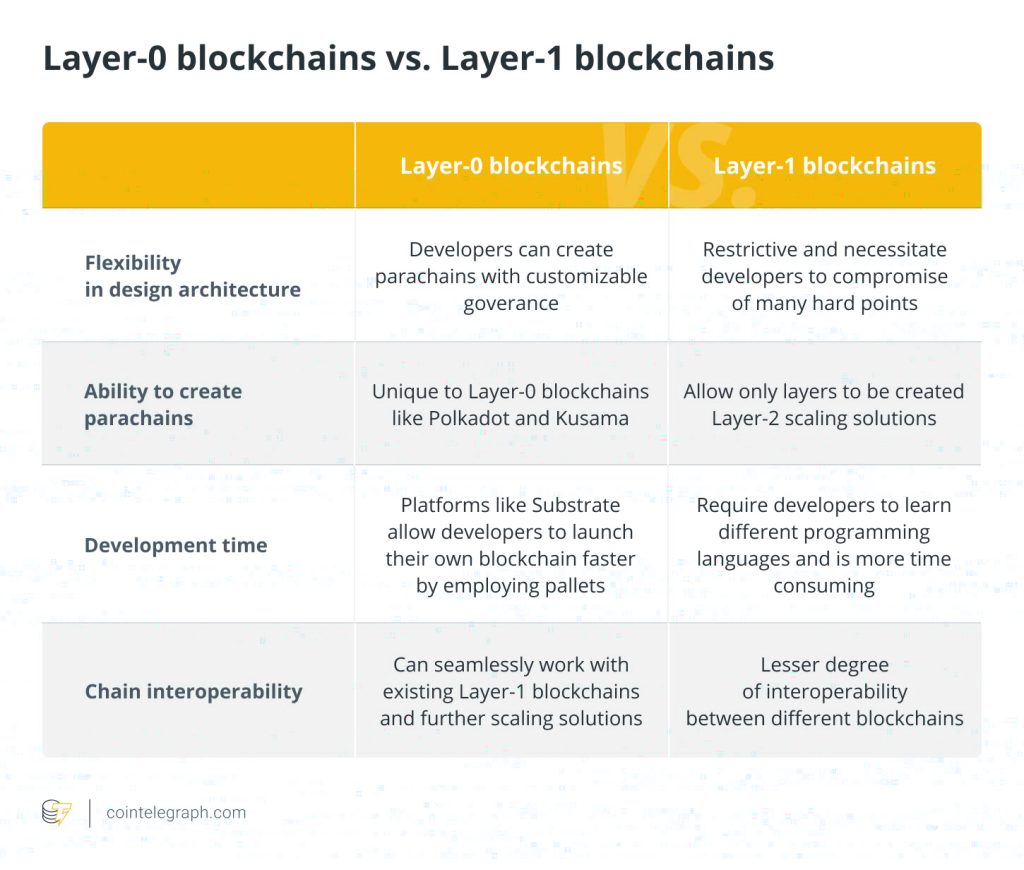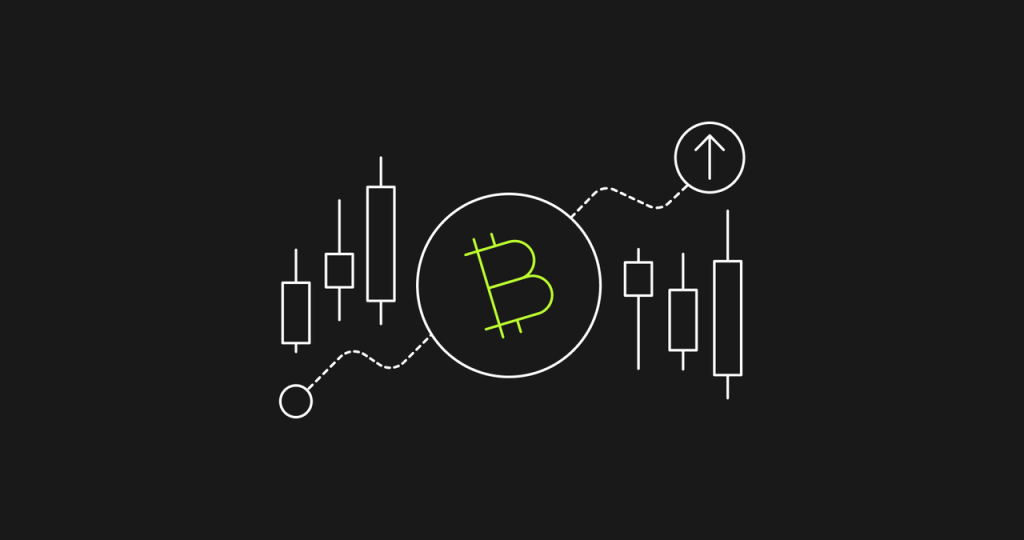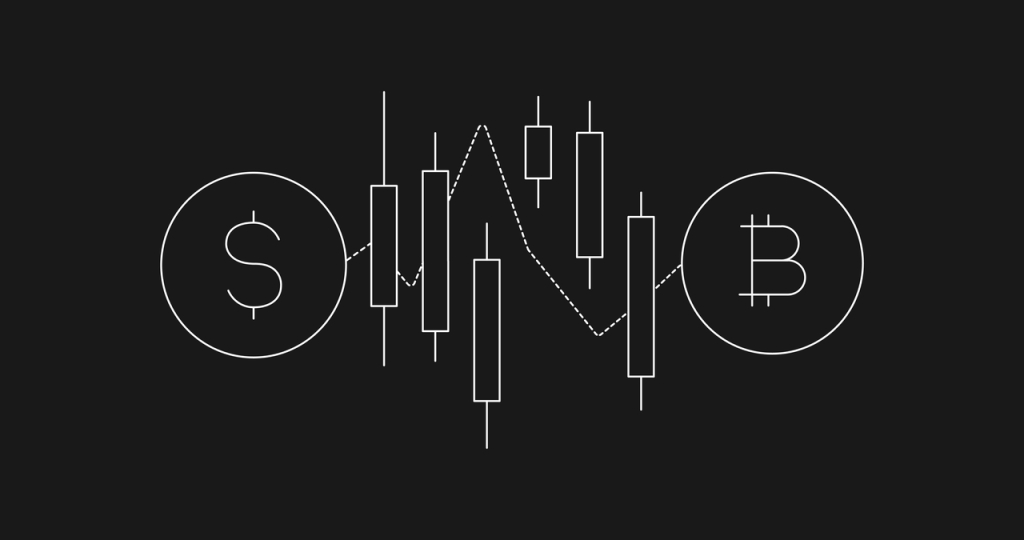What's the difference between blockchain layers L0 and L1?


Understanding blockchain technology and blockchain networks
Blockchain technology is a peer-to-peer digital ledger technology that relies on a network of computing devices or nodes to process transactions involving an asset, store the resultant data and broadcast it among these nodes in the form of “blocks” of immutable data, with all information transparently exchanged between permissioned network members.
These “blocks” form a shared ledger of transactions that are tamper-proof and eliminate the duplicative efforts typical in traditional business networks like financial institutions. Even more impressive is that each “block” is connected with the preceding ones to form a chain of data that cannot be altered, explaining the origin of the term “blockchain.”
Since businesses thrive on information supply, the more accurate and faster the movement of information, the better its prospects and the potential for expansion. Eponymously named after this transformative technology, blockchain networks or protocols exchange information via the internet and use a network of nodes to verify, maintain and distribute the common transaction ledger within the network.
Achieving a level of decentralization and transparency that has never been seen before, these blockchain networks are currently powering many decentralized applications (DApps) and are revolutionizing how citizens across the globe transact with each other via the internet.
Why is scalability in blockchain technology important?
While blockchain proponents imagine a future where a decentralized ecosystem of blockchain networks facilitates all types of contracts, blockchain architecture often forces developers to settle for a compromise between entirely decentralized governance and increasing scalability while designing blockchain networks that can also thwart any malicious cyber-attack.
This is because while a blockchain network gets stronger as its number of “blocks” increases, the verification process, itself, gets more complex and necessitates more resources for computing, thereby affecting the maximum throughput possible without compromising the security of the network.
On the other hand, if the validating process or consensus mechanism that underpins different blockchains is tweaked to increase transaction speeds, it can result in the entire blockchain network being more susceptible to attacks from bad actors or cybercriminals.
This situation leads us to the “blockchain trilemma”— a term coined by Ethereum founder Vitalik Buterin to describe the challenge developers face in creating a blockchain protocol that is decentralized, secure and scalable without any trade-offs made between all three aspects.
While some developers are navigating these trials by innovating different layers on top of existing blockchains, others are working on creating blockchain networks that leverage the strengths of protocols such as Bitcoin, Ethereum and their likes to achieve all three targets.
What is a layer-1 blockchain and how does it work?
Typically, blockchain architecture comprises many overlapping layers such as an infrastructure or hardware layer, data layer, network layer, consensus layer and an application layer. While this topic, itself, warrants a deeper explanation, the consensus and application layers are essential for blockchain platforms to exist.
The underlying consensus mechanism determines how the blockchain processes transactions, validates them and adds “blocks” of data to the blockchain. The application layer, on the other hand, comprises elements such as DApps, smart contracts and chaincode to allow user nodes to interface with the blockchain network.
Popular cryptocurrencies like Bitcoin (BTC) and Ethereum (ETH) run on blockchain networks that are known as base or layer-1 blockchains. Adopting proof-of-work (PoW) consensus mechanisms, these layer-1 blockchain protocols rely on mining or validator nodes to solve cryptographic puzzles to generate a hash that is used by other nodes on the network to validate the block. In return, the miner who solves the puzzle first gets rewarded with a certain number of the network's native coins.
While inherently more secure, PoW layer-1 blockchains are severely limited by their transaction speeds and are prone to congestion when the network grapples with increasing transaction demand. In an attempt to solve this scalability issue, layer-1 blockchains are resorting to changes to the consensus mechanism. For instance, the Ethereum layer-1 blockchain protocol is transitioning to a PoS consensus mechanism to implement new scaling solutions.
In other instances, scaling solutions such as sharding are being considered to reduce the amount of computing power needed from each validator node in the blockchain network. Known as on-chain scaling, layer-1 blockchain protocols are also dabbling with modifications to the capacity of each “block” in the chain and reducing the block generation time to increase transaction speeds.
However, these layer-1 scaling solutions cannot compete with the processing speeds of traditional business platforms and have limited cross-chain interoperability. The latter matters a lot, especially for decentralized finance (DeFi) applications that depend on offering users the freedom to transact between different blockchains in a bid to compete with platforms like Visa and Mastercard.
Additionally, concerns surrounding the security provided by such solutions have egged developers to pursue a more innovative approach to the challenge of achieving both, scalability and cross-chain interoperability.
What is a layer-0 blockchain and how does it work?
Layer-1 blockchain protocols often force project developers to compromise on the design aspects of their custom DApps since these protocols are tailored to suit the average use case. Additionally, by building upon layer-1 blockchains that have certain inherent constraints, developers cannot pursue further development unless the fixes are made to the underlying protocol.
Layer-0 blockchain protocols come to the rescue by allowing developers to create custom blockchains that can be tailored to their exact requirements. These layer-0 blockchain solutions allow developers to combine various elements from different layer-1 blockchain protocols while retaining their own ecosystem to eke out further performance improvements.
Layer-0 blockchain protocols are highly versatile and simultaneously compatible with not only layer-1 blockchain solutions but also the more focused layer-2 scaling solutions that are currently proliferating the blockchain space. More importantly, layer-0 blockchain protocols are providing the necessary tools for developers to create blockchains that allow for high cross-chain interoperability and facilitate faster communication between the various chains.
Blockchain protocols such as Cosmos (ATOM) and Polkadot (DOT) are prime examples of layer-0 blockchain protocols that employ a decentralized network of independent parallel blockchains to create an entire ecosystem of networks with superlative cross-chain interoperability. They use layer-0 crypto tokens native to their platforms, such as the ATOM token on the Cosmos blockchain, to facilitate transactions within their ecosystem and across other layer-1 blockchains too.
With a multichain network consisting of highly customized blockchain solutions working in parallel with each other, these layer-0 blockchain protocols are laying the foundation for the future of Web3.
Layer-0 vs. layer-1 blockchain solutions
While both types of blockchain solutions have their own set of advantages, it is important to understand how the crypto space can increase mainstream crypto adoption by facilitating faster transactions between the entire ecosystem of blockchain protocols.
This is where layer-0 blockchain solutions can prove very important as they can seamlessly work with existing layer-1 blockchain protocols while providing developers with a higher degree of flexibility in making design decisions. Offering the ability to broaden the number of use cases by creating custom parachains, layer-0 blockchain solutions can considerably improve scalability without sacrificing decentralization or needing long development cycles. Platforms like Substrate are providing developers with a blockchain framework that empowers them to create their custom blockchains that can exist independently as “solo chains” too.

As more layer-0 blockchain protocols and blockchain SDKs like Substrate are introduced, the overall Web3 vision of creating a connected digital infrastructure for the world to transact in is getting closer to reality.
The road ahead
The main differences between blockchain layers are related to scalability and how they work with dApps. Also, when all layers are considered, each acts as a distinct level of development for a blockchain system. More people are becoming interested in the rapidly expanding blockchain ecosystem, which includes cutting-edge products like DeFi and NFTs. Scalability is therefore essential for the long-term sustainability of blockchain networks. However, significant blockchain systems may eventually increase their scalability, but it will take some time.
The most likely scenario is that Layer-0 and Layer-1 networks concentrate on security while letting Layer-2 networks customize their services for specific use cases. Large chains like Ethereum, which have a sizable user and developer community, will likely continue to rule in the foreseeable future. However, it provides a strong foundation for focused Layer-2 solutions thanks to its broad, decentralized validator set and well-regarded reputation.






… [Trackback]
[…] Read More on on that Topic: x.superex.com/academys/beginner/3369/ […]
… [Trackback]
[…] Read More here on that Topic: x.superex.com/academys/beginner/3369/ […]
… [Trackback]
[…] Find More Info here to that Topic: x.superex.com/academys/beginner/3369/ […]
… [Trackback]
[…] Read More Info here on that Topic: x.superex.com/academys/beginner/3369/ […]
… [Trackback]
[…] There you can find 55458 additional Information to that Topic: x.superex.com/academys/beginner/3369/ […]
… [Trackback]
[…] Read More here on that Topic: x.superex.com/academys/beginner/3369/ […]
… [Trackback]
[…] Info on that Topic: x.superex.com/academys/beginner/3369/ […]
… [Trackback]
[…] Read More Info here to that Topic: x.superex.com/academys/beginner/3369/ […]
… [Trackback]
[…] Info to that Topic: x.superex.com/academys/beginner/3369/ […]
… [Trackback]
[…] Information to that Topic: x.superex.com/academys/beginner/3369/ […]
… [Trackback]
[…] Read More on to that Topic: x.superex.com/academys/beginner/3369/ […]
… [Trackback]
[…] Read More on on that Topic: x.superex.com/academys/beginner/3369/ […]
… [Trackback]
[…] Here you will find 3410 more Info on that Topic: x.superex.com/academys/beginner/3369/ […]
… [Trackback]
[…] Find More Info here to that Topic: x.superex.com/academys/beginner/3369/ […]
… [Trackback]
[…] Read More on that Topic: x.superex.com/academys/beginner/3369/ […]
… [Trackback]
[…] Info to that Topic: x.superex.com/academys/beginner/3369/ […]
… [Trackback]
[…] Information on that Topic: x.superex.com/academys/beginner/3369/ […]
… [Trackback]
[…] Information on that Topic: x.superex.com/academys/beginner/3369/ […]
… [Trackback]
[…] Here you will find 73124 additional Information to that Topic: x.superex.com/academys/beginner/3369/ […]
… [Trackback]
[…] Read More here on that Topic: x.superex.com/academys/beginner/3369/ […]
… [Trackback]
[…] There you can find 92778 more Information on that Topic: x.superex.com/academys/beginner/3369/ […]
… [Trackback]
[…] Find More Info here on that Topic: x.superex.com/academys/beginner/3369/ […]